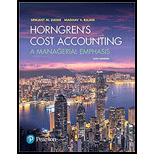
Methods of joint-cost allocation, comprehensive. Kardash Cosmetics purchases flowers in bulk and processes them into perfume. From a certain mix of petals, the firm uses Process A to generate Seduction, its high-grade perfume, as well as a certain residue. The residue is then further treated, using Process B, to yield Romance, a medium-grade perfume. An ounce of residue typically yields an ounce of Romance.
In July, the company used 25,000 pounds of petals. Costs involved in Process A, i.e., reducing the petals to Seduction and the residue, were:
The additional costs of producing Romance in Process B were:
During July, Process A yielded 7,000 ounces of Seduction and 49,000 ounces of residue. From this, 5,000 ounces of Seduction were packaged and sold for $109.50 an ounce. Also, 28,000 ounces of Romance were processed in Process B and then packaged and sold for $31.50 an ounce. The other 21,000 ounces remained as residue. Packaging costs incurred were $137,500 for Seduction and $196,000 for Romance. The firm has no beginning inventory on July 1.
If it so desired the firm could have sold unpackaged Seduction for $56 an ounce and the residue from Process A for $24 an ounce.
- 1. What is the joint cost of the firm to be allocated to Seduction and Romance?
Required
- 1. Under the physical measure method, how would the joint costs be allocated to Seduction and Romance?
- 2. Under the sales value at splitoff method, what portion of the joint costs would be allocated to Seduction and Romance, respectively?
- 3. What is the estimated net realizable value per ounce of Seduction and Romance?
- 4. Under the net realizable value method, what portion of the joint costs would be allocated to Seduction and Romance, respectively?
- 5. What is the gross margin percentage for the firm as a whole?
- 6. Allocate the joint costs to Seduction and Romance under the constant gross-margin percentage NRV method.
- 7. If you were the manager of Kardash Cosmetics, would you continue to process the petal residue into Romance perfume? Explain your answer.
Learn your wayIncludes step-by-step video

Chapter 16 Solutions
EBK HORNGREN'S COST ACCOUNTING
Additional Business Textbook Solutions
Foundations Of Finance
Macroeconomics
Operations Management
Gitman: Principl Manageri Finance_15 (15th Edition) (What's New in Finance)
MARKETING:REAL PEOPLE,REAL CHOICES
Financial Accounting: Tools for Business Decision Making, 8th Edition
 Cornerstones of Cost Management (Cornerstones Ser...AccountingISBN:9781305970663Author:Don R. Hansen, Maryanne M. MowenPublisher:Cengage LearningPrinciples of Accounting Volume 2AccountingISBN:9781947172609Author:OpenStaxPublisher:OpenStax College
Cornerstones of Cost Management (Cornerstones Ser...AccountingISBN:9781305970663Author:Don R. Hansen, Maryanne M. MowenPublisher:Cengage LearningPrinciples of Accounting Volume 2AccountingISBN:9781947172609Author:OpenStaxPublisher:OpenStax College

